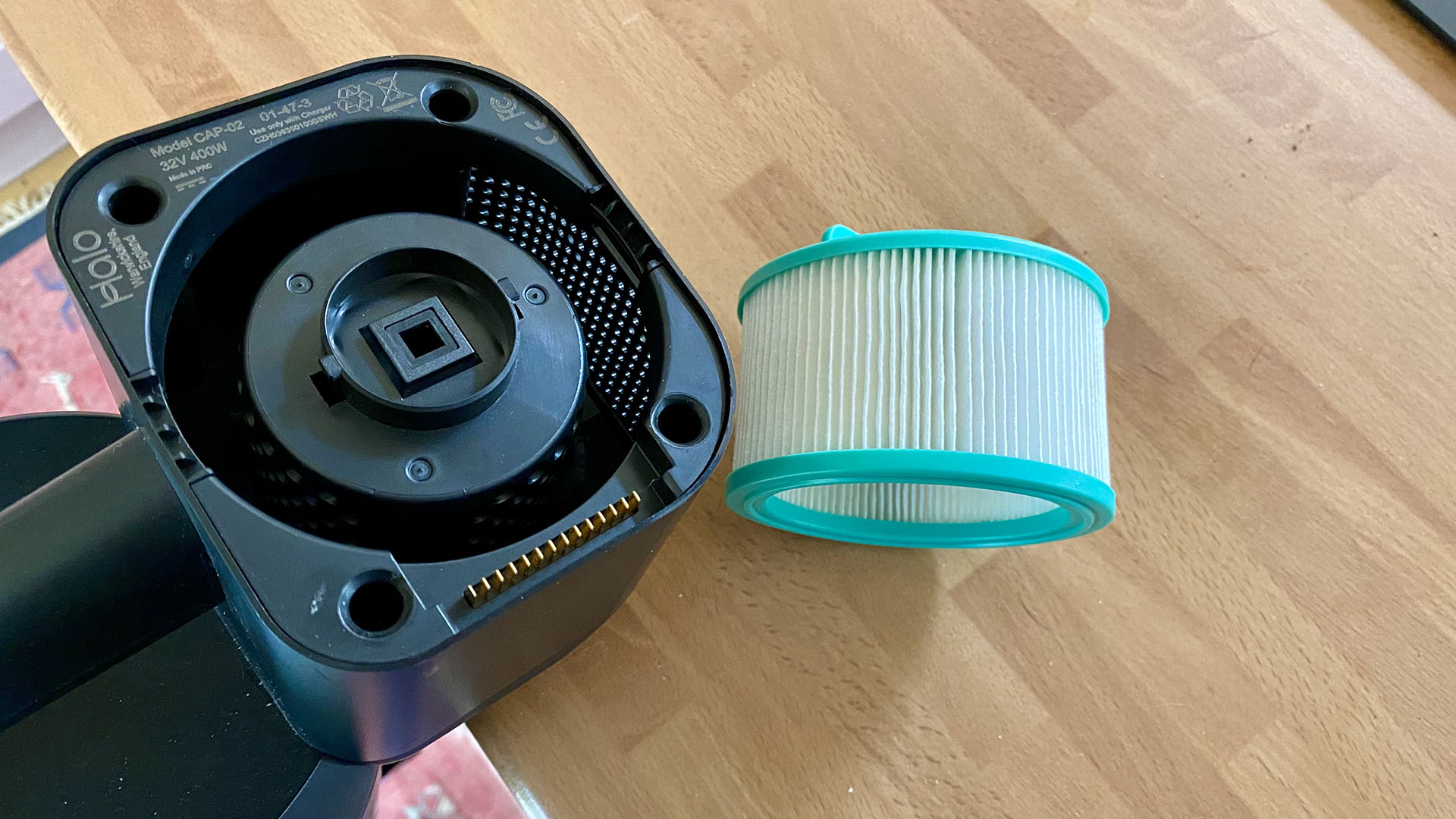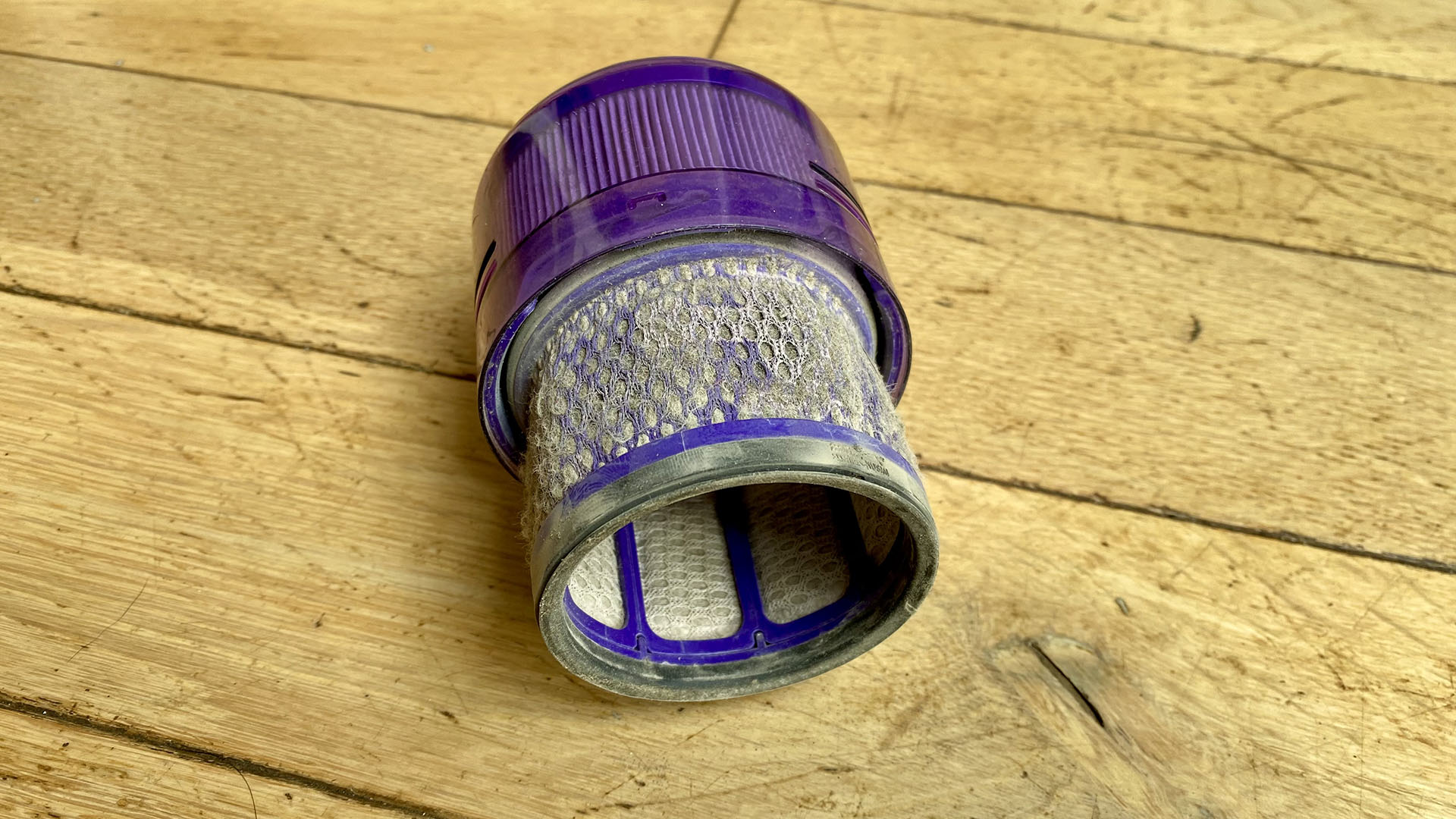I've tested dozens of vacuum cleaners – here's why bagged models are best

I've reviewed dozens of vacuum cleaners over the years. Corded and cordless, from the best vacuum cleaner brands around. Most of the corded models have been of the bagged variety, while most of the cordless models have adopted the Dyson bagless approach. However, my recent Halo Capsule X review – the only bagged cordless stick vacuum cleaner I know of – has prompted me to question whether I actually prefer a bagged vac over a bagless one. Let me explain.
The first bagless vacuum cleaner came out in 1993, courtesy of one James Dyson. According to the history books, Dyson was fed up with the loss of suction whenever the bag in his vacuum cleaner filled up. This prompted him to dabble with cyclonic forces to see if he could apply the same physics to a vacuum cleaner that didn't need a bag at all. The Dyson G-Force was born and the royalties it earned were swiftly pumped into his follow-up, the popular 'Dual Cyclone' DC01 corded upright. The rest is history and now bagless vacuum cleaners are by far the most popular type of floor cleaner on the planet.
But are bagless vacuum cleaners really that much better than the bagged variety, especially given how far technology has advanced since the 1990s? Buyers of the first bagless Dysons probably weren't that bothered by the loss of suction claims. Instead they were captivated by the thought that they would no longer need to buy any more dust bags for their ‘Hoovers' (as they were generically know in those days) and equally spellbound by the thought of being able to see all the muck that their new cleaner had forced into its transparent dust canister. It told them that the vacuum cleaner was, indeed, working as claimed.
Well I personally no longer see having to buy replacement dust bags that much of an inconvenience and, as a result, I can't think of any valid reasons in this day and age why anyone would want to continue avoiding bagged vacs in favor of the bagless variety. Yes, both systems may have their ups and downs, but in the main I think bagged vacs are quite possibly more efficient in general, cheaper to run in the long term, and certainly more reliable, and for several more reasons which I shall divulge below.
Here's why bagged vacuum cleaners just might have the upper hand...
1. They have better filtration and allergen control
One of the biggest advantages of bagged vacuums is their ability to contain allergens more effectively than their bagless counterparts. With a bagless machine you have to empty its dusty contents into the trash after a very short period of vacuuming, and by doing so you can be 100 per cent sure that a plume of dust will rise as soon as the contents hit the bottom of the trash can. Shark is experimenting with adding a self-empty canister option for some of its best cordless vacuums (read TechRadar's Shark Detect Pro Cordless with Auto Empty review for an example), and while that might improve things, you still need to empty that at some point.

With a bagged machine, all dust, pet hair and sneezy allergens are encased in a sealed environment, which significantly reduces the risk of releasing all these particles back into the air. I am forever having to wipe away the dust on the lip of my Brabantia flip-top and vacuum the floor around it every time I empty my Dyson Gen5detect or Gtech AirRam 2, and I've grown tired of having to do so. Thankfully I don't suffer from dust allergies but I can only imagine how bad it must be for those that do.
Sign up for breaking news, reviews, opinion, top tech deals, and more.
2. They're easier to maintain
Have you ever noticed how dirty the filters get in your bagless vac after just a few days of cleaning? That's the nature of the beast and one of the worst things about it is that cleaning the filter properly involves running it under a tap, coating the entire sink in brown muck in the process. And then you have to wait a full 24 hours for the filter to dry completely, with zero signs of dampness, or the filter will simply attract more dust more quickly than ever before. This kind of thing doesn't happen with a bagged vac… or at least not for several weeks, and even then the filter will rarely be as dirty as that of a bagless model.

3. Bagged vacs have a longer lifespan
Bagged vacuums tend to maintain their suction power more consistently over time; at least that's the case with most modern models like the Halo Capsule range. As the bag fills up, it continues to trap dust and debris without any significant loss in suction, whereas bagless vacuum cleaners usually experience a noticeable decrease in performance as their filters become clogged.
The design of bagged vacuum cleaners also protects the internal components from dust and debris. In fact, the bag itself acts as a barrier, preventing particles from reaching and potentially damaging the motor and other vital parts. This can lead to a longer lifespan for the vacuum cleaner.
4. Bagged vacs can handle finer dust particles
Expanding on my point above, a bagged vacuum cleaner is much more capable of collecting really fine, powdered particles like cooled fireplace ash and plaster dust after sanding. Although you're not advised to use your bagged vacuum cleaner for collecting large quantities of fine-particle dust – there are specific models available for that – it's okay to use it occasionally without causing any damage. Try collecting fireplace ash with a bagless vacuum cleaner and you run the real risk of not just instantly clogging up the filter but irreversibly damaging the motor in the process.

To prove this point, I have already destroyed two bagless hand vacuums – Tineco and Shark – I used to clean up around the wood burner. I switched to these after almost killing my Dyson Omni-glide. However, I now use a ‘bagged' mini Gtech ProLite handheld, which continues to work perfectly after four months of regular fireplace cleaning. Unlike a bagless vac where all the fine ash is whizzed around a cyclonic unit with the finest particles ending up in the filter and motor housing, a bagged model sucks everything directly into the bag. It's why the Henry vacuum is so popular on building sites.
5. They're more reliable for heavy-duty cleaning
Bagged vacuum cleaners typically have a larger capacity compared to bagless models. Take the Halo Capsule X for instance. This cordless stick model comes with a whopping two liter bag capacity against, say, the Dyson Gen5detect which has a much lower capacity of just 0.77 liters.
I have two Labradors – not the worst breed for molting – and three cats and it takes just one 10-minute session on my lounge carpet to completely fill a Dyson, Tineco or Shark. By contrast, my bagged Halo goes on for several weeks of cleaning. Yes, I will need to keep on top of bag management and order new bags in good time, but I consider this a pretty insignificant inconvenience given that they don't cost much, and online shopping is so efficient these days that it will only take a day or two for new ones to arrive in the post. As a result I am now a bagged vac convert. There, I've said it.
Derek Adams has been in consumer tech journalism since joining London listings magazine Time Out in the early ‘80s. He’s an experienced reviewer of cordless vacs and robot vacs, indeed anything that runs on batteries or has a plug attached. Derek also writes extensively for TechRadar’s sister site T3.com between playing drums and guitar with his bandmates in Red Box.
